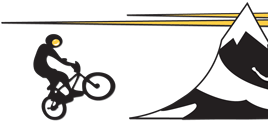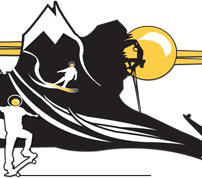Types of Helmets
The purpose of any helmet is to attempt to protect the head from injury. Plastic helmets achieve this through the process of mechanical energy-absorption. When selecting or sizing helmets, weight and volume are important issues not only for comfort, but can reduce the risk of injury to the head and neck. Style is a desirable factor, but should come second to functionality of helmets, sizing helmets, and appropriate structure of helmets for each specific sport.
Cycling
The two types of cycling helmets most commonly used today are hard shell and soft (or micro) shell. An effective and ideally functional bike helmet would include features such as proper ventilation for body temperature regulation, lightweight construction, aerodynamic shape, minimal interference with peripheral vision, and protection against impact on road or cars. Plastic helmets for bicycling should meet the CPSC standard.
Skateboarding & Rollerblading
Though hard shell plastic helmets have become less used by cyclists, they have remained popular with skateboarders and inline skaters. Unlike typical cycling helmets, the hard shell on skateboard helmets is built to sustain multiple impacts. EPP, expanded polypropylene is one of the best materials to look for in the interior foam of the helmet. Skate helmets should meet the ASTM F1492 standard. Brands that meet this standard as well as the CPSC cycling standard for helmets include Bell Faction, Mirra, Free Agent, Kryptonics Signature, and Pro-Tec Classic.
Climbing
When sizing helmets, the perfect rock climbing helmet is lightweight with the least amount of bulkiness possible in order to maximize climbing ability. Ideally, it should offer protection against debris and falling objects, like rocks and equipment, by incorporating a small lip or visor. This unique addition also shields against rain in the climbing position. Other factors to consider are headlamp compatibility and the type of suspension system. In a suspended shell, there is a gap between the webbing and the shell, often made of polystyrene. There are two other types of suspension in plastic helmets. One is the bicycle-style that fits the skull snugly, an important factor in sizing helmets. The other is a hybrid version of the first two types, which boasts the benefits of both energy absorption and distribution. A few of the most reputable brands are Black Diamond, C.A.M.P., Cassin Astral, Edelrid Ultralight, Kong Scarab, Petzl, and Simond Bumper.
Kayaking & Whitewater
The head is the place where heat exits the body. Wearing a skull cap in addition to a helmet is the way to go in cold water and potentially cold weather. This practice will warm the whole body from headaches and swimmers ear. A kayaking helmet should maintain a stiffer shell, in order to manage impact and distribute the force over a larger area. Stiff materials to be found in plastic helmets are carbon fiber, Kevlar, and polycarbonate. Amount of cushioning is an important factor not only for comfort and sizing helmets, but for protection, distribution of energy upon impact, and deceleration.
Snow
Winter helmets are constructed for a variety of snow sports. The best models of winter helmets feature the ability to withstand multiple impacts, insulation for cold weather, ear coverage, goggle compatibility, and moisture-wicking liner. Newer models often include earpad speakers that can connect to portable music devices for easy listening. There are several styles of winter helmets to choose from, such as full shell, short shell, and full face. In-mold winter helmets are light, sleek, and one-pieced. Injection-molded winter helmets are considered more durable against falls and bumps due to the design of the EPS foam being bonded to a separate shell, but offer similar protection against impact.
Is your helmet providing protection? Helmet size matters! Many helmet wearers unknowingly wear their helmets too loose or too high on their heads. Allsporthelmets.com understands the importance of a good fitting helmet.
In order to make sure your new helmet fits properly please follow these Allsporthelmets.com step by step sizing instructions. Then review our sizing chart to help determine which helmet size is appropriate according to the helmet sport you are looking for.
Also, when purchasing any helmet on line review the return policy in case the helmet does not fit or is not comfortable as you want to be sure you can exchange it with ease.
You will love your helmet with proper sizing and fit!








